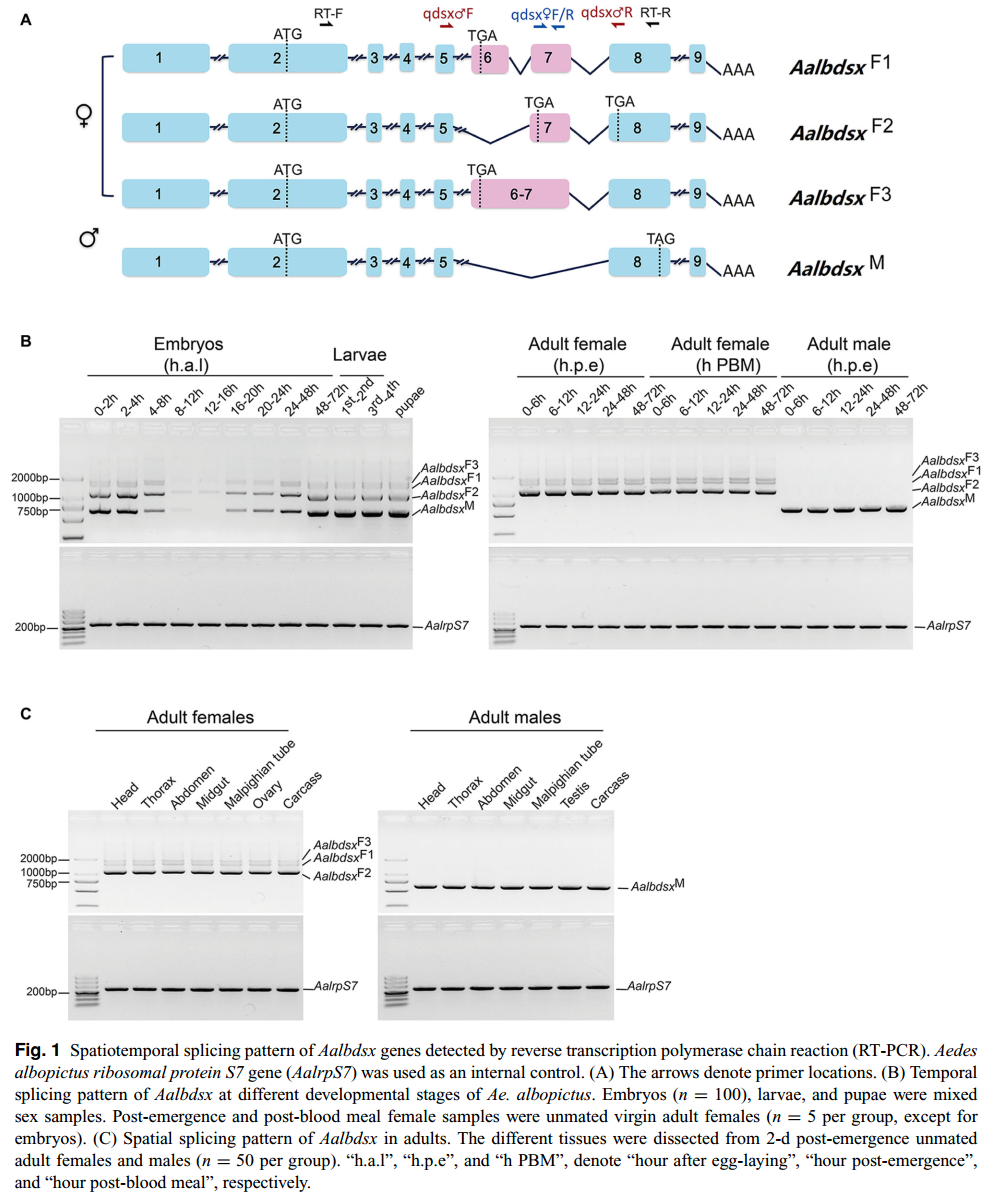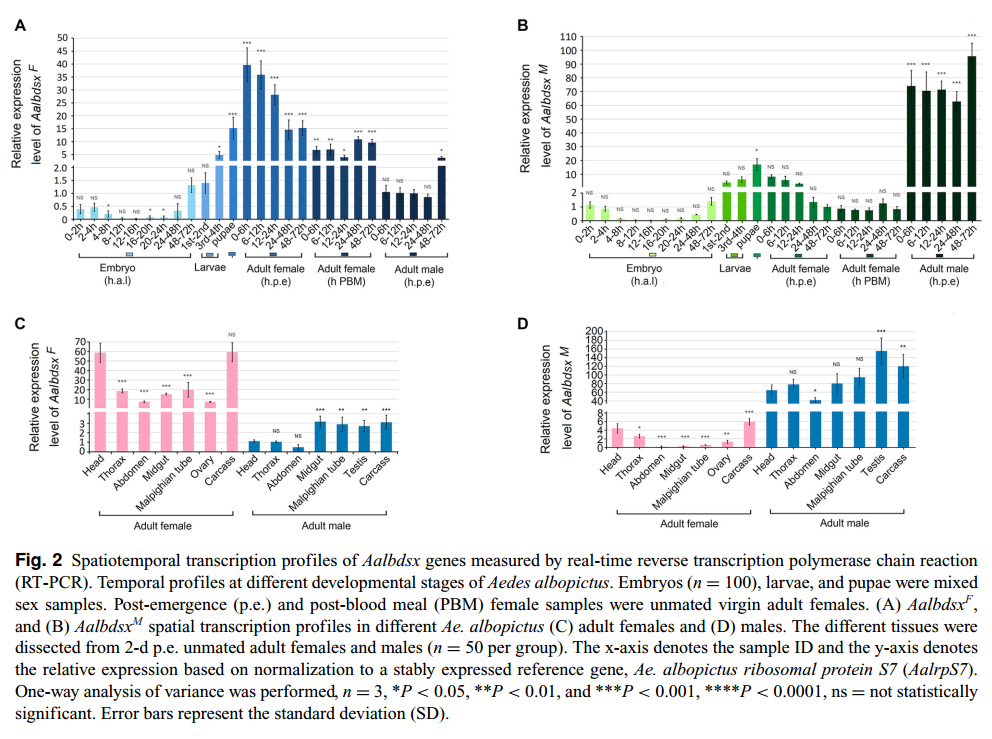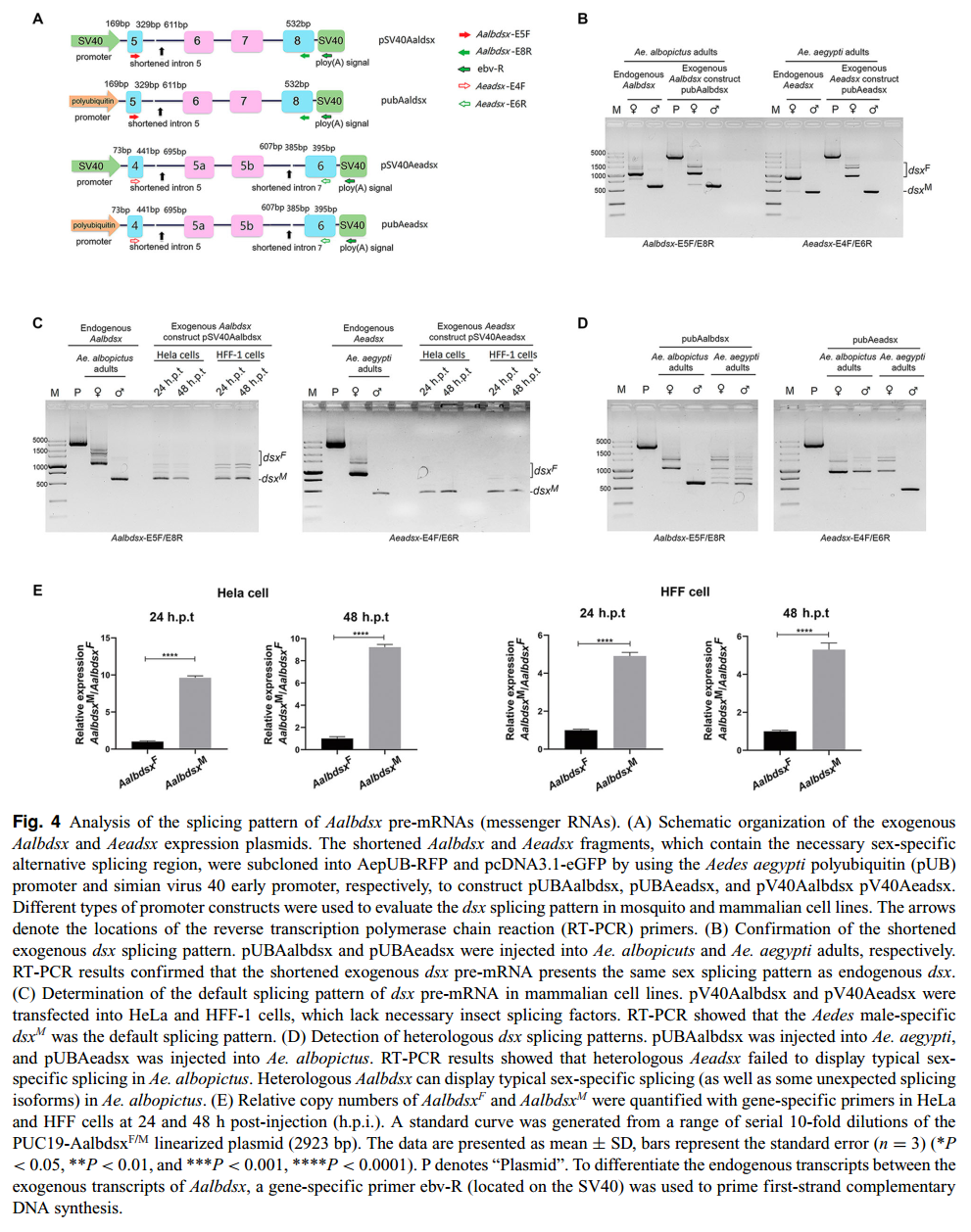Binbin Jin, Yijie Zhao, Yunqiao Dong, Peiwen Liu, Yan Sun, Xiaocong Li, Xin Zhang, Xiao-Guang Chen*, Jinbao Gu*
ABSTRACT
Sexual development in insects is regulated by a complicated hierarchical cascade of sex determination. The primary signals are diverse, whereas the central nexus doublesex (dsx) gene is relatively conserved within the pathway. Aedes (Stegomyia) albopictus is an important vector with an extensive worldwide distribution. We previously reported that Ae. albopictus dsx (Aalbdsx) yields one male- (AalbdsxM ) and three female-specific isoforms (AalbdsxF1-3 ); however, the spatiotemporal expression profiles and mechanisms regulating sex-specific alternative splicing require further investigation. In this study, we demonstrated that the AalbdsxM messenger RNA (mRNA) represents the default pattern when analyzed in human foreskin fibroblasts and HeLa cells. We combined reverse transcription polymerase chain reaction with RNA immunoprecipitation using specific antibodies against tagged Ae. albopictus male-determining factor AalNix and confirmed that AalNix indirectly regulates dsx pre-mRNA and regulates its alternative splicing. During the early embryo stage (0-2 and 4-8 h), maternal dsxF and default splicing dsxM were detected in both sexes; the expression of dsxM then decreased until sufficient AalNix transcripts accumulated in male embryos at 20-24 h. These findings suggest that one or more potential dsx splicing enhancers can shift dsxM to dsxF in both sexes; however, the presence of Nix influences the function of this unknown splicing enhancer and ultimately leads to the formation of dsxM in males. Finally, our results provide important insight into the regulatory mechanism of dsx alternative splicing in the mosquito.
Keywords: Aedes albopictus; Doublesex; alternative splicing; mosquito control; sex determination.
Insect Sci. 2020 Nov 11.
DOI : https://doi.org/10.1111/1744-7917.12886


